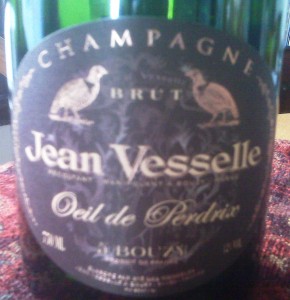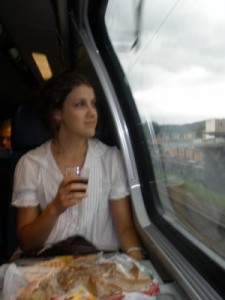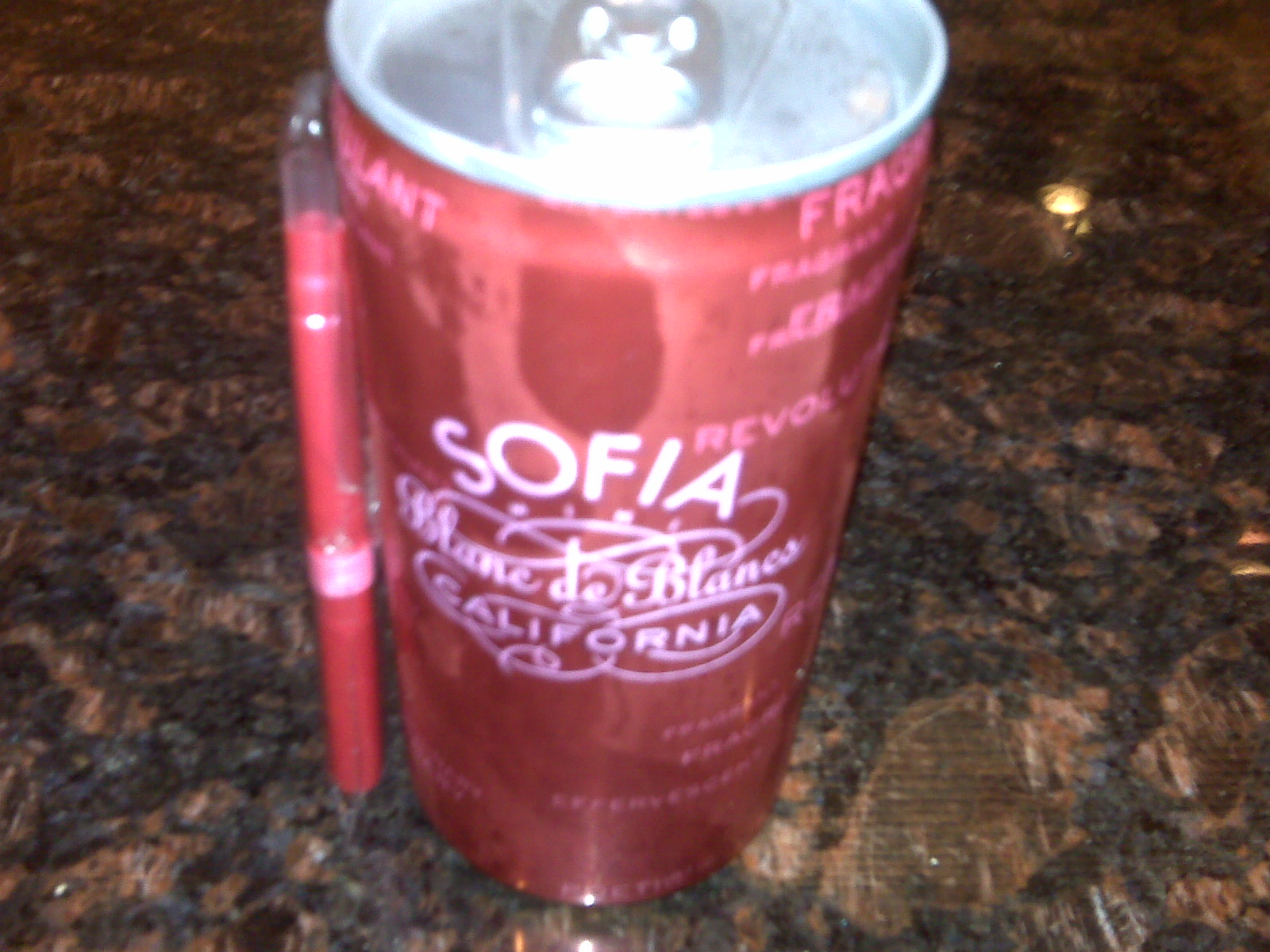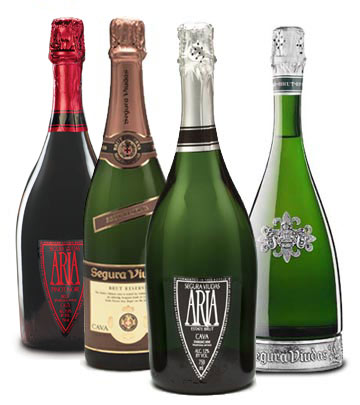 The sun is shining here in Boston and I'm off to a Grower Champagne tasting in a little while. Yes, I have something to feel jolly about! But as I was telling friends about my afternoon plans, I remembered many people don't know the tremendous loveliness that is Grower Champagne - or what I'm so excited about. So today I'm going to launch my latest Wine Wednesday theme: A Bit on Bubbly.
There's much to be understood about Champagne. How they make it (aka what makes it so special). What grapes are used (Chardonnay (white), Pinot Noir (red) and Pinot Meunier (red)) and how that translates into "English" on a wine label. Why folks are eager to expand the region. Who are the top producers (or at least those who market their wines most effectively...). I could go on. For now, let's focus on a specialty item within the Champagne world: Growers Champagne.
The sun is shining here in Boston and I'm off to a Grower Champagne tasting in a little while. Yes, I have something to feel jolly about! But as I was telling friends about my afternoon plans, I remembered many people don't know the tremendous loveliness that is Grower Champagne - or what I'm so excited about. So today I'm going to launch my latest Wine Wednesday theme: A Bit on Bubbly.
There's much to be understood about Champagne. How they make it (aka what makes it so special). What grapes are used (Chardonnay (white), Pinot Noir (red) and Pinot Meunier (red)) and how that translates into "English" on a wine label. Why folks are eager to expand the region. Who are the top producers (or at least those who market their wines most effectively...). I could go on. For now, let's focus on a specialty item within the Champagne world: Growers Champagne.
I'd argue Growers Champagne is the least understood and possibly the best Champagne on the market. (Yes, we all know I prefer when winemakers use the best grapes and allow the terroir to speak as loudly as possible. Oops! Did I just give something away?!) Here's the scoop:
There are a handful of brand names (Moet & Chandon, Veuve Clicquot, Mumm, etc.) that produce 80% of the Champagne on the market. Each of these names produces wines per a formula, or a "House Style". They largely get their grapes from whoever is selling them via the top (Grand Cru), next level (Premier Cru) or bottom teir of farmers ("generic" villages in the Champagne AOC); they only own 12% of the vineyards. The economics of this process is quite intriguing - and telling - too. The government tells growers what day they can harvest their grapes and sets the price per must weight. Such regulation means growers pick the grapes as early as possible, when the grape must weight is at it's highest. Since they get paid based on 1) village "level" with Grand Cru villages getting paid the most and 2) weight of the grapes, growers are happy. Because each House can legally doctor the final alcohol level through chapitalization, they are less concerned with the ripeness of the fruit (when the grape's natural sugar level is optimal for wine making). Winemakers also have more grape quantity to work with, allowing them to produce more Champagne for the market. The focus is on quantity, not quality. And so the vines are young, producing more fruit but having less character.
Grower Champagnes are produced by those who tend their own vines. The focus is on quality, not quantity. They select the ripest fruit so they only have to chapitalize when necessary. They use minimal dosage, less the sugar mask the flavors of the land. It's simply wine making at its best. The fact that we're dealing with Champagne in this case, well, to the victor goes the spoils!
It's not that the mass-marketed wines aren't fulfilling. (I, for one, think Perrier-Joet knows what they are doing.) But just because Grower wines are out of sight, doesn't mean they should be out of mind. Enter folks like Terry Theise, an exceptional importer of fine wines. Theise has found some special wines and, under his well-known name, is allowing these small guys to compete with big houses (the Borders of the wine world, if you will). Suffice to say (in this long, exuberant post), I'm going to taste a few Theise selections today and will do my best to report back with some of the latest finds just in time for the Holidays.
In the meantime, I'd love to know: What's your relationship with Bubbly?
 Some people hate holiday shopping. I, for one, love it. It's not the shopping part per se I like so much. It is the coming up with creative ideas to touch the hearts of the people in your life that's fun. I like giving more than receiving (though that has some perks, too).
For those on a lower budget or who prefer the nod of something clever to something pricey, think about this idea (care of the New York Times) for the wine lover in your life.
Some people hate holiday shopping. I, for one, love it. It's not the shopping part per se I like so much. It is the coming up with creative ideas to touch the hearts of the people in your life that's fun. I like giving more than receiving (though that has some perks, too).
For those on a lower budget or who prefer the nod of something clever to something pricey, think about this idea (care of the New York Times) for the wine lover in your life.

 Graduation season is in full swing throughout the country. No doubt corks are flying as years of hard work are celebrated and new adventures anticipated. But what to do with left over bubbly?
We often think of sparkling wine as a special commodity not for everyday buying. So when purchasing a bottle (whether actual Champagne, a domestic effort or some other country's fine offering) we are remiss to waste it. But we all know sparkling doesn't hold up so well overnight. The wine simply cannot deliver the same experience on Day 2. Or can it?
Graduation season is in full swing throughout the country. No doubt corks are flying as years of hard work are celebrated and new adventures anticipated. But what to do with left over bubbly?
We often think of sparkling wine as a special commodity not for everyday buying. So when purchasing a bottle (whether actual Champagne, a domestic effort or some other country's fine offering) we are remiss to waste it. But we all know sparkling doesn't hold up so well overnight. The wine simply cannot deliver the same experience on Day 2. Or can it? I tried to write a novel a few years ago. Unfortunately I discovered I don't have the patience to develop characters in that special way that sucks you in and devotes you to their trials and tribulations and celebrations as if they were your real-life friends. Any wine writer who can do that to me is Prime Rib, or perhaps more appropriately, a glass of truly tremendous Growers Champagne.
I've had the uncommon pleasure of "drinking" my Growers Champagne, if you will, at the pen of two different writers, given two very different wine context in the last week and a half alone.
I tried to write a novel a few years ago. Unfortunately I discovered I don't have the patience to develop characters in that special way that sucks you in and devotes you to their trials and tribulations and celebrations as if they were your real-life friends. Any wine writer who can do that to me is Prime Rib, or perhaps more appropriately, a glass of truly tremendous Growers Champagne.
I've had the uncommon pleasure of "drinking" my Growers Champagne, if you will, at the pen of two different writers, given two very different wine context in the last week and a half alone. Happy New Year! I hope you enjoyed a great bit of bubbly - whether Cava, Prosecco, Champagne, domestic sparkling or what have you - to ring in 2009. I have to admit, I'm a little sad the holidays are behind us. I did quite some damage enjoying bubbly from almost every wine-producing continent throughout December. And in so doing, I rejoiced in and fully celebrated just how great, food-friendly and versatile it is. My New Year's resolution might just include drinking at least one bottle each month of the year (not necessarily by myself or all at once, mind you). Ah, yes... I like this idea!
What with all my bubbly enjoyment these last several weeks I couldn't help but muse the Marketing Giant that is the word, the region, and the renowned sparkler: Champagne. Just think of it! No other wine region in France, or really elsewhere, has the panache that Champagne does. No other wine seems to have inspired so many other styles of or takes on sparkling. No other wine says "sophistication" like Champagne. How does such a small-production entity (only 12% of sparkling wine worldwide) manage to capture the hearts/minds of so many people worldwide?
Happy New Year! I hope you enjoyed a great bit of bubbly - whether Cava, Prosecco, Champagne, domestic sparkling or what have you - to ring in 2009. I have to admit, I'm a little sad the holidays are behind us. I did quite some damage enjoying bubbly from almost every wine-producing continent throughout December. And in so doing, I rejoiced in and fully celebrated just how great, food-friendly and versatile it is. My New Year's resolution might just include drinking at least one bottle each month of the year (not necessarily by myself or all at once, mind you). Ah, yes... I like this idea!
What with all my bubbly enjoyment these last several weeks I couldn't help but muse the Marketing Giant that is the word, the region, and the renowned sparkler: Champagne. Just think of it! No other wine region in France, or really elsewhere, has the panache that Champagne does. No other wine seems to have inspired so many other styles of or takes on sparkling. No other wine says "sophistication" like Champagne. How does such a small-production entity (only 12% of sparkling wine worldwide) manage to capture the hearts/minds of so many people worldwide?
 'Tis the season to be merry! And sometimes merriment is best facilitated by getting your guests in the mood for - in the immortal words of Seinfeld writers - Festivus! Last weekend I had the pleasure of pouring a few holiday libations for just such a purpose at a public tasting event. (I had what happens to be my favorite
'Tis the season to be merry! And sometimes merriment is best facilitated by getting your guests in the mood for - in the immortal words of Seinfeld writers - Festivus! Last weekend I had the pleasure of pouring a few holiday libations for just such a purpose at a public tasting event. (I had what happens to be my favorite  The sun is shining here in Boston and I'm off to a Grower Champagne tasting in a little while. Yes, I have something to feel jolly about! But as I was telling friends about my afternoon plans, I remembered many people don't know the tremendous loveliness that is Grower Champagne - or what I'm so excited about. So today I'm going to launch my latest Wine Wednesday theme: A Bit on Bubbly.
There's much to be understood
The sun is shining here in Boston and I'm off to a Grower Champagne tasting in a little while. Yes, I have something to feel jolly about! But as I was telling friends about my afternoon plans, I remembered many people don't know the tremendous loveliness that is Grower Champagne - or what I'm so excited about. So today I'm going to launch my latest Wine Wednesday theme: A Bit on Bubbly.
There's much to be understood